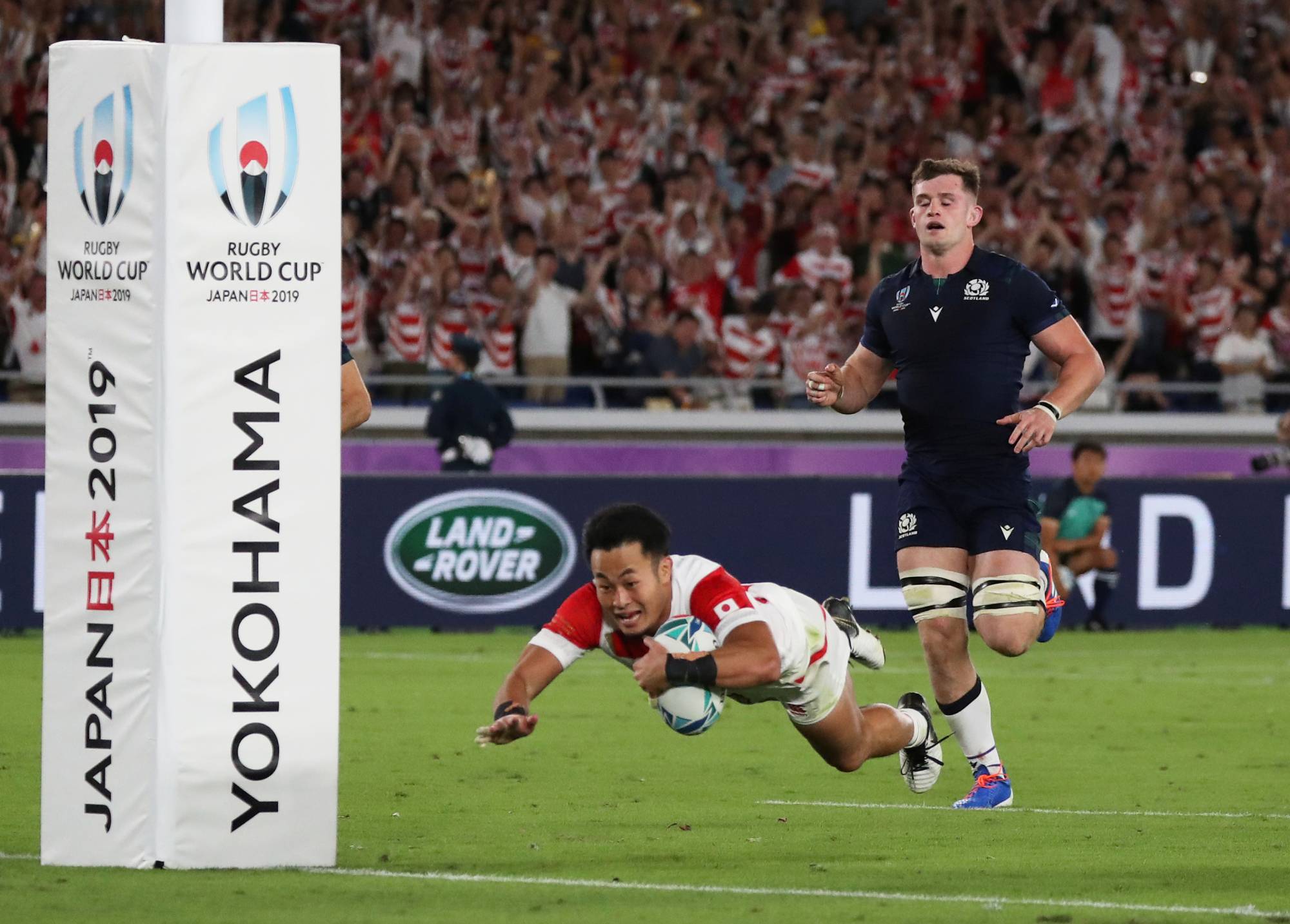An economic impact report on the 2019 Rugby World Cup confirms the 44-day event was the success organizers were hoping it would become when Japan was named host.
The report, which was done by Ernst and Young and released Wednesday by the tournament organizing committee, revealed the first RWC in Asia bore fruit in many areas and had a significant impact on Japan’s economy.
Alan Gilpin, the tournament director for 2019, was unreserved in his praise, saying coming to Japan “turned out to be perhaps one of the greatest decisions” that World Rugby, the sport’s global governing body, has made yet.
“The 2019 Rugby World Cup was a success in every level,” Gilpin said during a webinar on Wednesday. “(It was) ground-breaking, record-breaking, and game-changing.
“These compelling outcomes for the host nation and for rugby clearly demonstrate why the Rugby World Cup is a low-investment, high-return proposition (for) the unions and governments.
“And who knows? Maybe Japan will (host) it again.” According to the report, 99 percent of the tickets were sold, exceeding the 98 percent figure for the 2015 World Cup in England.
The final total, however, was 1,718,176 tickets, which failed to surpass the tallies from 2015 and from the 2009 RWC in France, the report said.
But the economic spillover impact was the highest in RWC history at ¥646.4 billion, supported by robust spectator spending.
Of the ¥388.9 billion spent by spectators, 53.8 percent (¥348.2 billion) was credited to fans coming from abroad who spent an average of 16 nights in Japan (versus 13 in England) and ¥686,117 each.
An estimated 242,000 people visited Japan for the tournament, with around 131,000 from Europe and 54,000 from Oceania.
Roughly 60 percent were visiting for the first time. Of that group, 75 percent of those surveyed said they’d “absolutely want to come again.” The ninth Rugby World Cup also attracted many niwaka (casual supporters), whose presence caused them to become a buzzword during the event.
As for domestic spectators, the report said that 40 percent were “people who had never before watched rugby or rarely watched it” and that 35 percent “rarely or infrequently attended or watched in the past.” An estimated 75 percent of this group were niwaka, the report said.
The impact report also added that Japan’s unprecedented run, reaching the knockout stage for the first time, helped raise local interest and that these new rugby fans contributed to the record-breaking ticket sales ratio.
Of all domestic fans who bought tickets through the official RWC site, 52 percent were noncore fans.
Stadium attendance hit 1.704 million, less than the total number of tickets sold because of the cancellation of three matches due to Typhoon Hagibis.
Television and internet coverage of the matches also produced surprising gains, the report said, noting that RWC-related TV broadcasts drew 857.28 million viewers, up 26 percent from 2015.
Digital viewing skyrocketed. Videos on social media during the event were played 2.04 billion times — six times more than in 2015.
Japan Rugby Football Union President Shigetaka Mori promised the JRFU would continue to work hard to make the sport more popular by capitalizing on the progress built during last fall’s 44-day extravaganza.
“If we have a chance, we would like to make a bid for another Rugby World Cup,” Mori said. “And we would like to form the (national) team that can win it all there.”



















With your current subscription plan you can comment on stories. However, before writing your first comment, please create a display name in the Profile section of your subscriber account page.